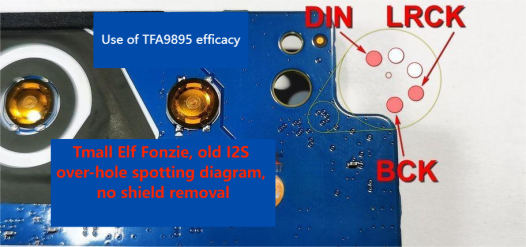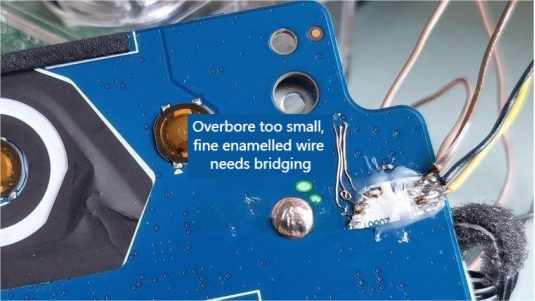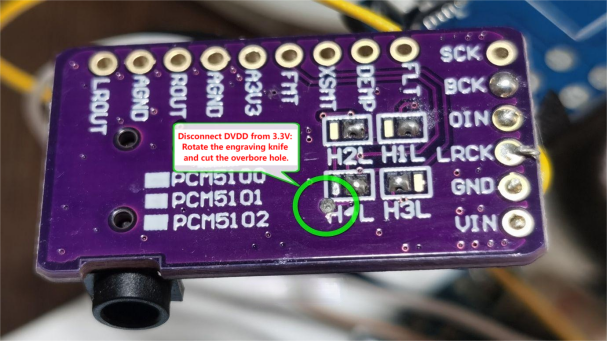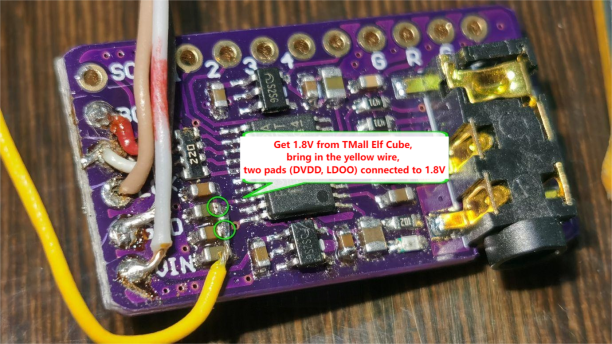
If you're interested in enhancing your music listening experience, consider a DIY project to incorporate an auxiliary output interface amplifier. To illustrate this, we'll use the example of an older version of the Tmall Elf sugar cube, which employs the TFA9895 amplifier, as opposed to the newer version featuring the AM82884f. The newer version allows for stereo sound, while the older one, constrained by software limitations, only outputs mono audio. Surprisingly, even after a firmware upgrade on the older version, it continues to provide mono sound output. This modification is designed to address this specific challenge.
To implement this modification, you will need to procure a PCM5102 module and prepare the pinout diagram for the older version. For those who find the process of removing the CPU's shielding cover cumbersome, there is an alternative method. By referencing the data sheet of the TFA9895 amplifier chip, you can identify three covered via holes near the chip's I2S interface, which obviates the need to remove the shielding cover. However, this approach does demand more advanced soldering skills.
Please refer to the appended images for visual clarification.


Old Version Diagram:

Connecting the PCM5102 module directly to the Tmall Elf may result in audio output, but it is often plagued by significant noise and distortion. Additionally, the audio signal on the wires may intermittently disappear or become muffled, rendering the overall listening experience unsatisfactory. The issue appears to be influenced by the circuit board's orientation and its proximity to the DCDC power converter. In principle, the audio DAC should not exhibit such sensitivity. Furthermore, the analog and digital grounds are already interconnected, eliminating the possibility of floating ground issues.
The root of the problem lies in the fact that the module functions as a universal ADC with 3.3V IO interfaces, whereas the I2S output of the Tmall Elf operates at 1.8V, creating a voltage mismatch. Occasionally achieving sound output is purely coincidental, and it comes at the cost of severely compromised signal quality. This manifests as significant clock jitter, potential data corruption, frame loss, audio data fluctuations, and the presence of numerous popping sounds. The PCM5102 chip can inherently support both 3.3V and 1.8V IO, contingent on the surrounding circuit's design. Modifications need to be made in advance, and upon successful implementation, noise will be completely eliminated, even when making physical contact with the data or clock lines.
In a nutshell, the steps to modify the small board are as follows:
1. Disconnect DVDD and the LDO 3.3V output.
2. Establish an additional 1.8V power source for DVDD and LDOO from the Tmall Elf's main board.
3. Short-circuit DVDD and LDOO.


Examine the I2S data, and you will observe that the data signal output from the Tmall Elf exclusively contains data for the left channel, with the right channel (CH2) registering as all zeros.





